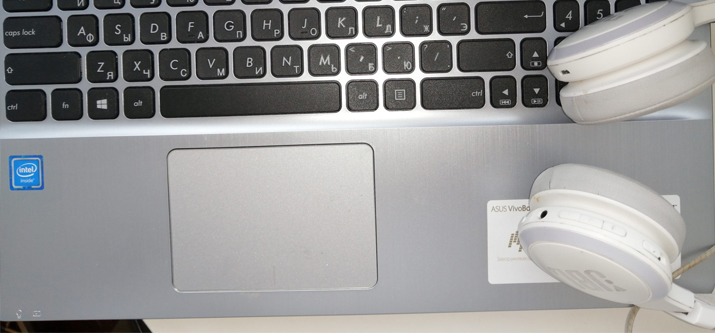How hubs need to adapt to support everyone involved
I’ve already written in this forum about the technical and procedural issues that legal interpreters currently face during remote hearings. In this article, I use my most recent experiences of remote interpreting from client-provided hubs at CIS-related cases to describe how there are still a few parts of the process that aren’t working as effectively as they should. I suggest that, with our collective will and a small up-scaling of the technical support available, they could resolve these disconnects not just to our satisfaction but also that of our clients.
No joined-up thinking
Recently I’ve participated in several CIS arbitration proceedings using various hubs, including arbitration centres, in my professional capacity as a legal interpreter. The inconsistencies and failings in the overall technical set-up for remote hearings caused numerous problems and delays for all involved.
The main issue is that even with a joint understanding of the processes and technology required for legal interpreters to be able to do their jobs, no one individual takes overall responsibility for (a) making sure adequate equipment and support is available at the start and (b) intervening and helping interpreters when things go wrong or the technology fails. It’s still not a joined-up process and legal interpreters often fall between the cracks, taking our clients with us.
Without the proper co-ordination of technology and infrastructure, the clients will be the ones to suffer the most in the long term.
Testing times for everyone involved
Just to recap, there are basically two ways of handling remote interpreting: from home or from a hub. For the reasons I discussed in my previous articles, home is not ideal, above all for our clients. If the client chooses to use a hub, it can be either in the client’s offices or at one of the existing arbitration centres. The interpreters can then all be in the same shared space, able to see and hear each other and communicate.
The other great advantage of a hub is the ability to use professional quality simultaneous interpreting equipment, something no interpreter can afford to deploy at home.
Why does the equipment have to be to a professional standard? Take volume control as an example. This may seem like a relatively trivial issue, but if I’m required to interpret from home using a laptop I cannot control the incoming volume accurately. If there is a sudden volume surge, I need to grab the mouse to turn it down (or off). With the best will in the world I can’t move fast enough, and the resulting acoustic shock poses a serious risk to my hearing. If I’m working at a hub then usually there is a console available where these volume surges can be better controlled, but not always.
Professional-grade equipment will also ensure the best sound quality possible so that our clients can hear us well.
I’ve also been in situations where the correct documents have failed to upload on time or at all, or the LiveNote transcription feed freezes altogether.
Even hubs are not immune from the issues
These deficiencies are also prevalent when a client creates their own hub for the hearing, be this located at the law firm’s own premises or at an arbitration centre, and where some (or all) of the technical functions are outsourced to a third party.
What is lacking is one single “directing mind”, one co-ordinating centre which takes ownership of the whole arrangement. The reason is simple: there are always at least four distinct entities involved in a remote hearing: the client, the hub, equipment provider, and Opus (or similar). Any engineer will tell you that in any given situation where there are several moving parts things will inevitably go wrong.
Yet in all the circumstances where I’ve participated in a hub, it’s all too evident that no-one expects this, let alone plans for it. The hub blames Opus, the sub-contractor reasonably points out that they are but one small cog in a larger machine, and that the machine should be co-ordinated by the hub. After all, they have done their bit by providing all the joining and other details to the participants and so the rest is up to the hub, or the interpreters. And the interpreters are caught in the middle.
Importantly, the interpreters need all the connections, logins and passwords etc to be handled in a centralised fashion, by one person only, ideally the hub or a technician, rather than any of the interpreters. We need to make certain that a dedicated technician is always available to manage the equipment and assist the interpreters. The other fundamental requirement is that there is one interface only that the interpreters have to deal with, and that interface must be either the hub or the dedicated technician.
A perfect storm
Speaking of technical shortcomings, on one memorable occasion, when working in an arbitration centre, I was forced to share a booth with an amplifier which heated up to unbearable levels as well as transmitting electronic irradiation. In another centre, interpreters’ booths were positioned so that we could only see the last three rows of the backs of people’s heads – anathema for us when reading body language is such a large part of what we do. In yet another, the window in the booth was too high up and partly frosted so interpreters needed to stand to be able to see what was happening in the room.
It only takes one or two of these things to happen to make my job difficult, yet so often I get a “perfect storm” where multiple things go wrong at once. The centres in question had clearly failed to properly instruct their architects at the design stage – something that could have been easily avoided had interpreters been consulted early on.
While I’m pleading the cause of proper support for legal interpreters at remote hearings, it’s not just us who suffer when the technical set up is less than efficacious. With no directing mind taking overall ownership of the infrastructure that enables remote proceedings, it’s the clients who bear the brunt of the delays and disruptions with unnecessarily prolonged trials at theirs or the taxpayers’ expense.
Conclusions
Remote hearings are here to stay, but we urgently need a proper infrastructure that’s fit for purpose and for the long-term. Rather than cobbling together disparate components as a workaround, it’s time for clients and hubs to invest in and take ownership of the delivery. It should be in their interest to sponsor the methodology that plots a smooth course through a remote hearing so that no-one is disadvantaged.
I suggest the following:
That someone (and it has to be one organisation or individual, ideally the hub) must take ownership of the whole matter, from A to Z, i.e. be the “directing mind and will”.
That arbitration centres involve professional interpreters early on in their planning, ideally at the centre design stage.
That clients – be they a law firms’ representative or their designated hub – must use the services of a professional interpreting equipment provider, rather than trying to address all the technical problems on their own. Theoretically they can, but only if they have a very highly qualified in-house technician on their payroll, which they hardly ever do.
That the equipment must include professional-grade consoles, headsets, microphones and separate booths. While we’re still social distancing, each interpreter must have their own individual booth, and all the booths must be in the same room so that we can see and hear each other.
That a dedicated sound engineer is always on call and able to pitch in for the interpreters, rather than one engineer trying to support all parties.
That hubs need to observe government safety and social distancing regulations for example by NOT placing participants in a booth with an electronic plant and by insisting that everyone wears face masks.
I’m not suggesting that remote hearings are designed round the interpreter’s needs to the exclusion of others. Rather that by investing the time and resources in a technical set up that’s reliable and well supported, everyone benefits.



